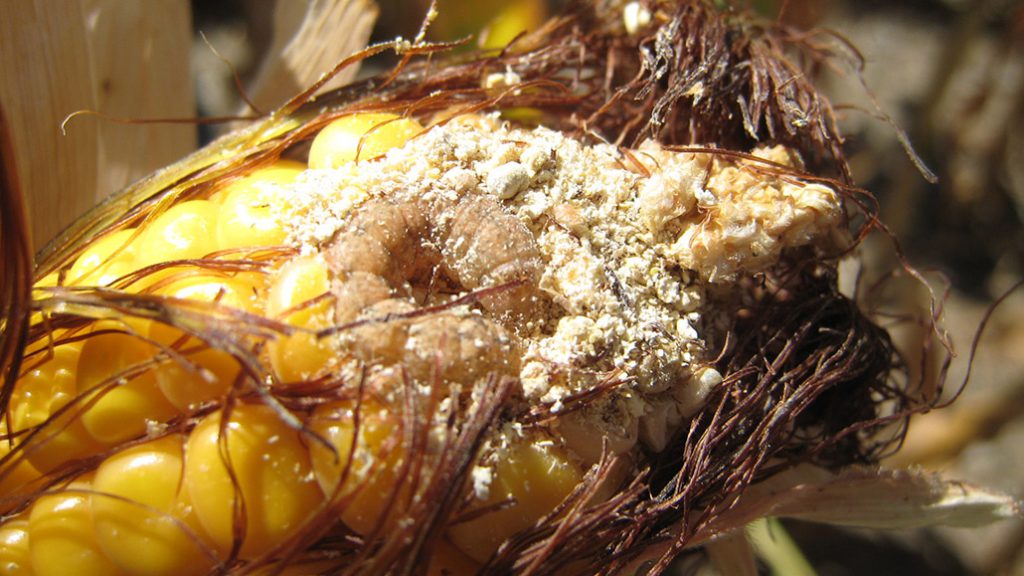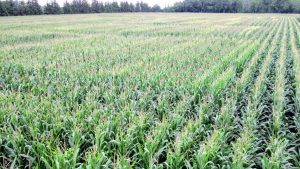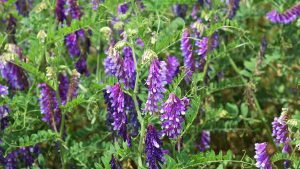Insect resistance management
WESTERN BEAN CUTWORM

WESTERN BEAN CUTWORM (WBC) was first identified in Ontario in 2008 and has quickly become one of the most challenging pest issues encountered by farmers growing corn in Ontario. Recently, WBC has undergone a range expansion across Eastern Canada and now overwinters in the Great Lakes region. With the help of researchers Dr. Jocelyn Smith, Dr. Yasmine Farhan, and Dr. Art Schaafsma at the University of Guelph Ridgetown Campus, it is becoming a more understood and manageable pest.
WBC feeds on corn ears resulting in yield loss, and in some years, increased ear mould infection via Gibberella ear rot (GER). This can result in deoxynivalenol (DON) and zearalenone (ZON) contamination of grain corn which can cause huge financial losses for farmers. Corn in Ontario is frequently at risk for mould infection due to favourable environmental conditions, making the management of WBC crucial. In 2018, high DON levels were due to environmental conditions more than WBC, but in prior years (2016) WBC caused high DON and ZON in grain corn.
RESEARCH
A recent study focused on the pest had five objectives; to evaluate thresholds for WBC and mycotoxin control, determine insecticides that were effective for control of WBC, maximize the effects of transgenic insecticidal proteins, measure how susceptible WBC is to Vip3A (an insecticidal protein), and to provide recommendations for resistance management for WBC.
“Throughout the study it was found that different areas of the cob, when insect injury was replicated, resulted in higher DON and ZON accumulation,” says Smith.
Cobs that had insect damage on the side of the ear at the R3 (kernel milk) or R5 (kernel dent) stage had the highest levels of DON and ZON in the grain.
Whereas ears that had silk clipping, injury to the tip kernels at R1 (silking stage) and R2 (kernel blister stage) or grazing injury at R6 (physiological maturity) had little effect on DON and ZON levels.
“It was also found that the severity of the injury had no effect on mycotoxin levels, a single insect feeding point was just as detrimental to mycotoxin contamination as a highly injured cob with many feeding points,” notes Smith.
RECOMMENDATIONS
From these findings Smith recommends farmers manage WBC and GER with a combined approach.
“Monitor individual fields for infestation and apply an insecticide and fungicide that targets GER at full silking. This would be recommended for the threshold of five per cent egg masses, although hybrids with lower tolerance to GER and in years with ideal environmental conditions, the WBC thresholds could be lowered.”
Vip3A is the only insecticidal protein that controls WBC currently. Field research to evaluate transgenic control of WBC showed that hybrids containing the Vip3A Bt had less kernel damage, disease severity, and total DON than a hybrid that didn’t contain the protein. Smith also notes that when WBC larvae are in an early stage (i.e. 1st instar) they are more susceptible to Vip3A. As the larvae mature (3rd and 5th instars) the Vip3A expression may not be high enough to control, increasing the risk of resistance developing to the protein.
When looking at insecticidal control of WBC, Smith shares that multiple insecticides were used in the study to control WBC. As with all insecticides, reading and following the label is crucial.
In order to delay WBC resistance and manage the insect effectively, a combination of control measures should be used. Farmers should note that scouting is a great option to help control WBC. Scouting should occur during peak moth flight. The Great Lakes and Maritimes Pest Monitoring Network identifies areas that should be scouted by analyzing weekly trap counts of WBC across the province. Rotating between the Vip3A Bt trait and foliar insecticides are also viable and recommended options. Following an insect resistance management plan will provide corn producers with a long-term strategy for successful WBC management.
MANAGE RESISTANCE NOW
Manage Resistance Now, a collaborative effort between CropLife Canada, industry, researchers, and government experts, is an excellent source of information on proactively managing insect, disease, and weed resistance. Videos, facts sheets, and case studies are available highlighting best management practices that include cultural, mechanical, biological, and chemical control measures. Agronomic practices that promote healthy plants are highlighted along with a selection of best control methods and the efficacy of various products. Take an active approach about managing resistance in your fields. Find out more at www.manageresistancenow.ca. •
Laura Ferrier is an agronomist with Grain Farmers of Ontario. •

























